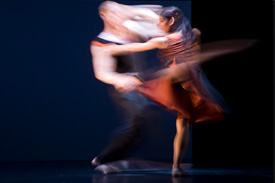 A recent study has suggested that dancers are more emotionally sensitive humans, indicating that the arts can play a significant role in potential empathy training. The study was published earlier in the summer by the Journal of Experimental Psychology: Human Perception and Performance, and the evidence gleaned demonstrates huge potential for dance. It seems general empathy training programmes have not shown similar results, and whilst activities such as yoga and meditation have some effects, it is hard to see reliable results.
A recent study has suggested that dancers are more emotionally sensitive humans, indicating that the arts can play a significant role in potential empathy training. The study was published earlier in the summer by the Journal of Experimental Psychology: Human Perception and Performance, and the evidence gleaned demonstrates huge potential for dance. It seems general empathy training programmes have not shown similar results, and whilst activities such as yoga and meditation have some effects, it is hard to see reliable results.
During the study, brief video clips of ballet were shown to two groups of people: professional ballet dancers, and a control group of those with no dance experience. The clips were silent, black-and-white, and a few seconds long, and the dancers’ faces were blurred so no facial expressions were visible. The participants therefore had no context other than the shapes of the bodies.
The participants were asked to rate their emotional response to the dancing, whether they liked or disliked the moves, or found them to be happy or sad, for example. The participants wore electrodes on their fingers to detect sweat responses triggered by emotional reactions, and the groups consequently “read” the emotions of the ballet clips correctly. As might be expected, the dancers had much stronger reactions to the emotional content, responding more sensitively and recognising the emotions easily.
The evidence therefore suggests that training in physical expressions made the dancers more sensitive to them, indicating that neurocognitive mechanisms that make people more sensitive can be trained, heightening awareness of emotions. Dance could even make people more empathetic, however further testing is required for this. It may be that dance training is not required to produce the same result, one could simply watch dance to develop greater emotional sensitivity.
